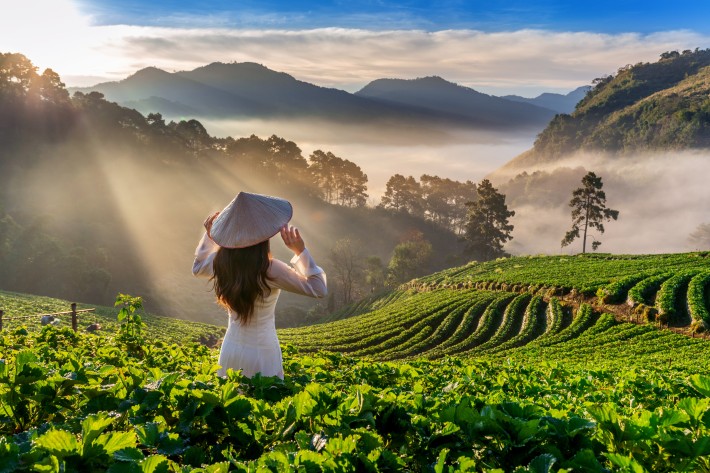Vietnam and Cambodia are two of Southeast Asia’s most fascinating destinations, offering a mix of rich history, breathtaking landscapes, and warm hospitality. Whether you’re wandering through Hanoi’s lively streets, exploring Ho Chi Minh City’s bustling markets, or standing in awe at Cambodia’s Angkor Wat, you’re in for an unforgettable experience. To help you make the most of your trip, here are some essential travel tips to navigate Vietnam and Cambodia with ease.
1. Visa Requirements and Entry Regulations
Before you book your trip, check the visa requirements based on your nationality. Vietnam offers e-Visas for many travelers, while Cambodia provides visas on arrival and online e-Visas. Ensure your passport is valid for at least six months from your date of arrival. To speed up the entry process, carry printed copies of your visa approval letters and necessary documents.
2. Best Time to Visit
The best time to explore Vietnam and Cambodia is during the dry season, from November to April. This period offers comfortable temperatures and minimal rainfall, making it ideal for sightseeing and outdoor activities. If you’re visiting during the monsoon season (May to October), expect occasional heavy showers—especially in coastal regions and lower elevations. However, this time also brings lush landscapes and fewer crowds.
3. Currency and Payment Methods
Vietnam uses the Vietnamese Dong (VND), while Cambodia primarily deals in Cambodian Riel (KHR). However, US dollars are widely accepted in Cambodia. While ATMs are available in major cities, it’s smart to carry some cash, especially if you’re traveling to rural areas. Credit cards are accepted in upscale hotels and restaurants but may not be usable in small shops or markets.
4. Getting Around: Transportation Tips
Public transportation varies between the two countries. In Vietnam, domestic flights, trains, and sleeper buses are popular for long-distance travel, while cities have taxis, motorbike taxis (xe om), and ride-hailing apps like Grab. Cambodia’s main mode of transport includes tuk-tuks, which are affordable and perfect for short distances. Always negotiate fares upfront or use metered taxis to avoid overpaying.
5. Local Etiquette and Cultural Norms
Respecting local traditions will make your trip smoother and more enjoyable. In both countries:
- Dress modestly, especially when visiting temples—covering shoulders and knees is expected.
- Remove your shoes before entering temples and homes.
- A slight bow or nod is a polite way to greet locals.
- Avoid touching people’s heads, as it’s considered disrespectful.
6. Street Food and Local Cuisine
Vietnam and Cambodia are paradise for food lovers. In Vietnam, make sure to try pho (noodle soup), banh mi (Vietnamese sandwich), and fresh spring rolls. Cambodia’s must-try dishes include fish amok (coconut curry) and kuy teav (noodle soup). Street food is a great way to experience authentic flavors, but choose vendors with high customer turnover to ensure freshness. Stick to bottled or filtered water to avoid any stomach issues.
7. Health and Safety Precautions
Before traveling, consult your doctor about recommended vaccinations, such as hepatitis A, typhoid, and tetanus. Mosquitoes are common in both countries, so bring insect repellent. If you’re heading into remote areas of Cambodia, be mindful of landmines and stick to well-trodden paths. In Vietnam, be extra careful when crossing the street—motorbike traffic can be chaotic.
8. Must-Visit Attractions
Vietnam is packed with stunning landscapes, from the limestone formations of Ha Long Bay to Sapa’s terraced rice fields. Hanoi and Ho Chi Minh City blend colonial history with modern energy, while Hoi An charms visitors with its lantern-lit streets. In Cambodia, Angkor Wat is an absolute must-see, but don’t overlook Phnom Penh’s vibrant streets or Koh Rong’s pristine beaches.
9. Shopping and Bargaining Tips
Markets in both countries offer unique souvenirs, textiles, and handmade crafts. Bargaining is expected in street markets, so don’t be afraid to negotiate. A friendly attitude and a smile go a long way in securing a fair deal. However, prices in malls and fixed-price stores are non-negotiable.
10. Staying Connected: Internet and Mobile Services
Staying connected is easy in both countries. SIM cards with affordable mobile data plans are available at airports and convenience stores. Wi-Fi is widely accessible in hotels, cafes, and restaurants, making it convenient to stay in touch and navigate your way around.
Final Thoughts
Vietnam and Cambodia offer the perfect mix of adventure, history, and culture. By keeping these travel tips in mind, you’ll have a smoother, more enjoyable experience. Whether you’re cruising the Mekong Delta, exploring ancient temples, or indulging in street food, your trips to Vietnam and Cambodia are bound to be unforgettable.
Author Bio
Threeland Travel is a reputable travel agency specializing in tailored tours throughout Vietnam, Cambodia, and Laos. They offer a variety of services, including cultural exploration, adventure travel, and luxury getaways. With a deep local presence and experienced guides, Threeland Travel guarantees an immersive and unforgettable experience as travelers explore the rich heritage and stunning landscapes of Southeast Asia.
